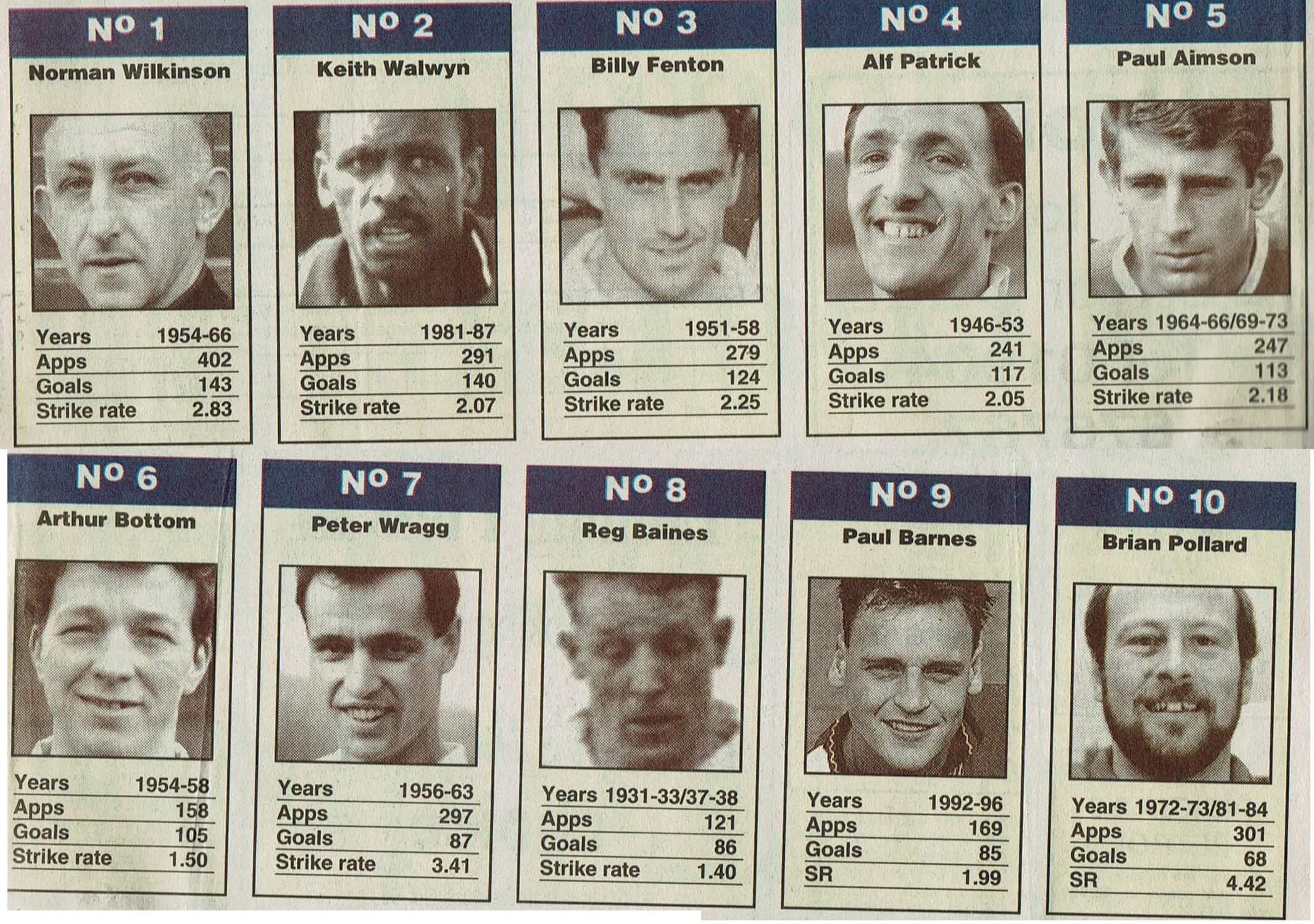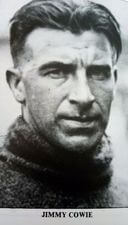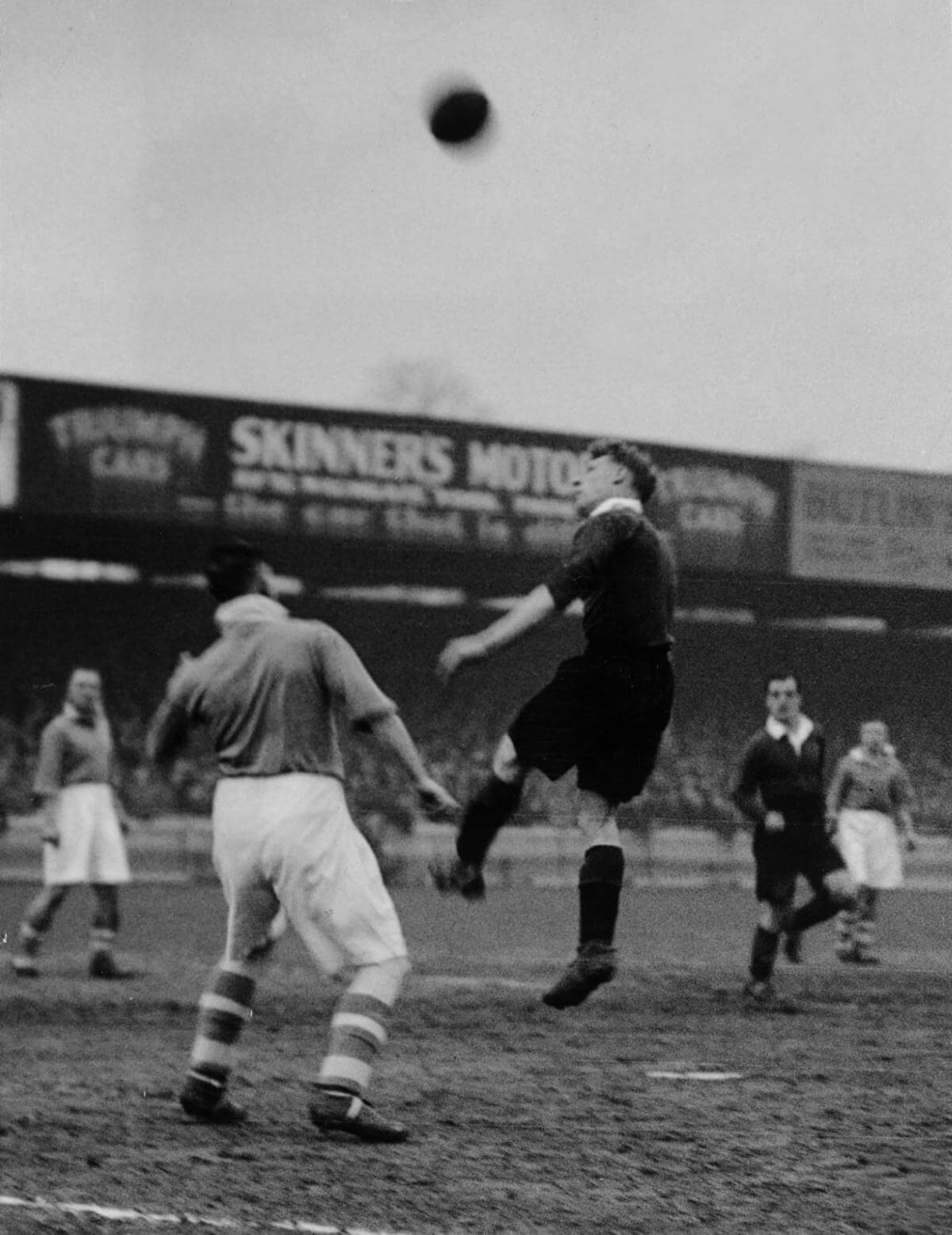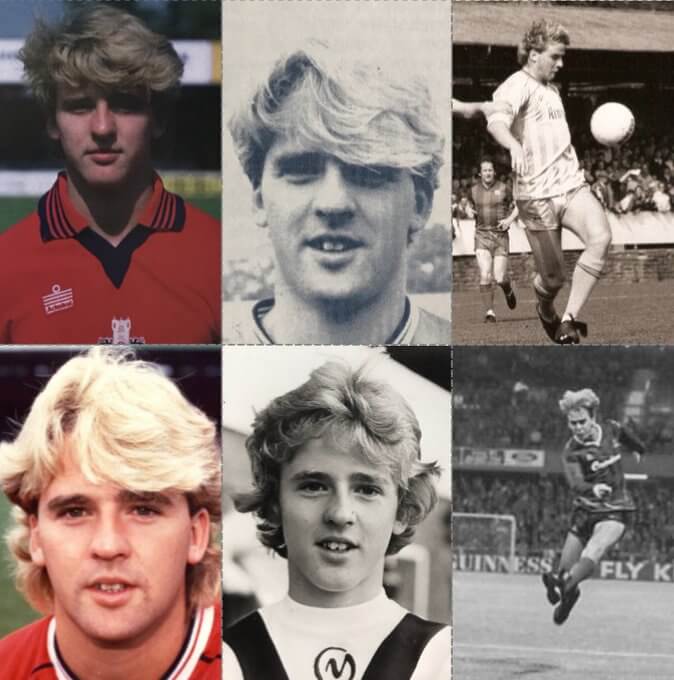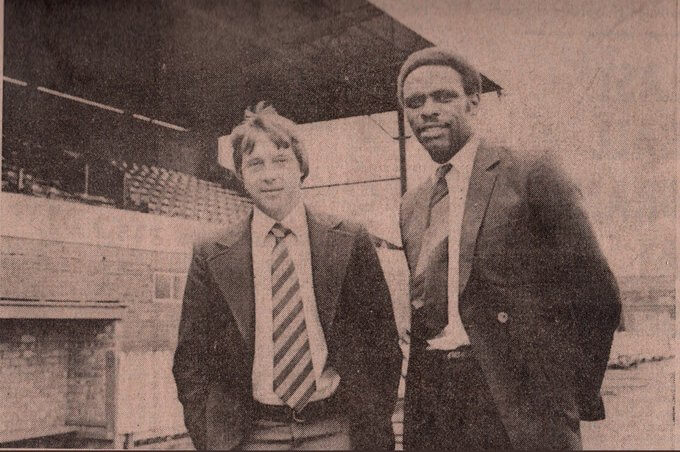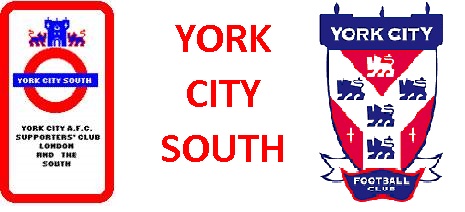

Strikers
Ever since 1922, York City have had a rich heritage in strikers. The early non league days saw Joe Hulme and Reg Stockill prominent. Hulme went on to play for Arsenal and England. Stockill, both City’s youngest ever player and youngest ever scorer, followed him into City’s team and onto Arsenal (this time via Scarborough).
From those early days, City’s Scottish striker, Jimmy Cowie also merits a mention, scoring a club record 56 goals in the 1928/9 season, City’s final non league season before election to The Football League. That season, he twice scored 6 goals in a game, but couldn’t replicate that form in City’s first 2 seasons in the League.
Reg Baines was a heavy scorer whose City career straddled City’s non league and league days in 2 spells and scored a club record 8 hat tricks for City. Centre forward Baines spent his entire football career with Yorkshire-based clubs, surprising until you consider that he combined playing with working for Rowntrees in York. He played for City during our Midland League years and moved onto Selby before returning to City in 1931. After two prolific seasons back at City, he was transferred to Sheffield United in 1933 for club record fee of £500 but struggled to gain a regular place. In November 1934, Doncaster Rovers’ Manager David Menzies signed Baines and he hit 21 goals in 27 League games, helping Rovers to the Championship of Division Three (North). He proved it was no fluke by finishing top-scorer with 19 goals the following season in Division Two. In 1937, Baines re-joined City and then played for Barnsley and Halifax Town before war broke out. For City, he scored 93 goals in 140 games and at Doncaster an equally impressive 43 goals in 81 games. He died in 1974, aged 67, in Tel Aviv on holiday. His brother Joe also played for City. Alongside him, Tom Fenoughty scored 104 goals for City between 1926 and 1934, the first ever player to score 100 goals for City.
In the immediate post war years, Alf Patrick (the first player to score 100+ goals for City and the only player to score 5 goals in a league game for City) set a new club record by scoring 117 goals for City in just 7 seasons before his career drew to an end, having made his Football League debut aged 25 in 1946.
Our 1954/5 FA Cup run saw Arthur Bottom, Norman Wilkinson, Billy Fenton and Billy Hughes form a formidable attack, the best in Division 3 (North), some said the best in the entire Football League. That season, Arthur Bottom was to score 39 goals for City, a number not bettered since we entered The Football League in 1929. It was the first time a City player had been the top scorer in our division. He left for a brief top flight career with Newcastle in 1958.
Bottom’s teammate, Norman Wilkinson, signed at the same time as Bottom in the summer of 1954 was to enjoy a 12 year career with City scoring an all time club record of 143 goals for City. Powerful in the air, he was a consistent, rather than prolific, scorer, 23 goals in his first City season was the only time he scored more than 20.
In the 1957/8, Billy Fenton set a new club record of 124 goals which Norman Wilkinson had broken with his 143 goals by the time he retired in 1966. The record stands to this day. Joining "The Happy Wanderers" in 1956 was Peter Wragg, who enjoyed a 17 year professional career. Signed for a club record fee of £4,000, he was a versatile forward or attacking midfield player. He scored 87 goals for City and captained City to our first ever promotion in 1959.
Despite a disappointing decade, the 1960s saw the emergence of 3 top strikers. Paul Aimson had 2 spells with City, many would describe him as City’s best ever striker. 2 youngsters, Ted MacDougall and Phil Boyer were picked up cheaply, both moved to Bournemouth and later top flight clubs. Both won international honours, Scotland and England respectively. Another striker from the dark days of the late 1960s, Tommy Ross also deserves a mention. Many years later, he was accredited with the game’s fastest ever hat trick scored in his pre City days. With City, he netted 20 goals, including a hat trick in a 6-0 FA Cup win at South Shields in the FA Cup. With City struggling badly at the time, a local butcher, Billy Barker from Burnholme (his son, Tony, later had the butcher's shop in Dunnington for many years), offered a prize of five or six large steaks to any City player scoring hat trick. There was a photo of Tommy with his large meat platter in the Press a few days later.
Although not the best strikers to play for City, Jimmy Seal and Chris Jones deserve a mention as they notched 37 goals between them as City clinched promotion to Division 2 in 1974. Alongside them saw the emergence Brian Pollard, a young and pacy winger, with an explosive finish and an eye for goal who went onto play top flight football for Watford.
As City struggled after Division 2, more stars were to emerge. First, Gordon Staniforth, a diminutive striker who was sold to Carlisle for a club record £120,000 fee, as he left, his place in the team was filled by John Byrne. Later, paired with Keith Walwyn, their goals powered City to the Division 4 championship in 1984.
Shortly afterwards, Byrne left City for QPR and was to play for Eire. Walwyn to was spend 6 seasons with City, scoring between 24 and 29 goals in 5 of those seasons, the other curtailed by an Achilles injury which restricted his mobility and meant he didn't play after February. He moved to divisional rivals Blackpool in 1987 when unable to agree a new contract with City. Walwyn scored 140 goals for City, agonisingly just 3 short of the all time club record. Walwyn was a powerful forward, possibly City's most powerful striker over the past 50 years, some doubted his first touch, but every defence feared his presence. John Byrne, for one, believes he could have played at a higher level, but maybe he lacked the drive, he did reject an approach from top flight Coventry in the spring of 1984 preferring to remain with basement division City as our record breaking 101 point season reached a climax. Incidentally, Keith Walwyn made a 15 minute cameo in Tony Canham’s testimonial game (1995) and for 25 minutes in Alan Little’s benefit game (1998). Keith also accepted an invitation to the launch of the Supporters' Trust at the Barbican in early 2003, His son (Matt) played for City 80s (v City 90s) in a 2004 YCST game at Bootham Crescent.
Keith Walwyn - a Daley Mayall tribue
It wasn’t until Paul Barnes was signed by John Ward after a long pursuit that City had another striker to be feared. His goals were instrumental as City enjoyed Wembley play off success in 1993 and memorably his brace at Old Trafford saw City vanquish Manchester United 3-0 in the
1995 Coca Cola Cup. Alongside Barnes, Tony Canham was to supply many of his chances, a left winger in the Brian Pollard mode. As Barnes departed, Gary Bull, a cousin of the proliflic Steve Bull, arrived. More classy, less physical than his cousin, following Barnes was a hard act to follow, but his teammates appreciated him. "A striker's dream to play with, he always knew when to release the ball when I made a run, quality player", said Rodney Rowe (Y Front #10) and "he was so clever with his movement and with his back to goal", (Neil Tolson, Y-Front #11).
City’s youth policy proved fruitful in the 1990s. Richard Cresswell emerged earning England Under 21 recognition with City before a club record £900,000 move to Premier League Sheffield Wednesday in 1999. A little earlier, his good friend Jon Greening, an attacking midfielder had left City for Manchester United.
More lean years followed, including relegation from the Football League. In 2006, Andy Bishop top scored in the Conference (22 league goals). Starring for Newcastle Benfield against City in an FA Cup tie, Richard Brodie joined in January 2007 and was to score with 34 goals in the 2009/10 season before leaving for Crawley for £275,000 a few months later. It was only the 3rd time a City player had been divisional top scoreer. Sadly, his career never progressed as it might have done, a return to City proving to be a disappointment.
City's Best Ever Striker - David Batters' Verdict
David Batters, York City club historian described Paul Aimson, who ranks number five on the club’s all time top scorer list, as "without a doubt … the best all round centre forward in the history of the club. He would be in my all star team. We've had great strikers like Keith Walwyn, Alf Patrick and, more recently, Paul Barnes. But Paul Aimson was top of the pile. He was the complete centre-forward and not only did he score goals he also created chances for others. He was a great bloke and a great footballer. Sometimes it's a bit frivolous to use the word legend, but Paul Aimson was a true legend. He will go down in York City history as one of the greats."
In total he made 249 (or 248 depending on your source) appearances for York and scored 113 times, including five hat tricks. He was top scorer in four of the six seasons he spent at Bootham Crescent. He returned to the ground 18 months before his death in 2008 and was given a standing ovation.
Graham Bradbury, City's former head of matchday hospitality recalled, "He was moved to tears, he then said to the fans you are the salt of the earth … He was the perfect centre forward and a perfect gentleman."
Ill health prevented him from attending York’s game against Weymouth in November 2007 where he had been invited to be the club’s guest of honour. He died of a heart attack in hospital near his home in Christchurch aged 64.
The 600 Club
We all love a great goal scorer, at City, we have had our fair score. The debate will forever rage as to who was our best ever striker.
City’s first ever game was September 6th 1922 when we lost 4-2 away to Notts County Reserves. Captain Billy Smith scored City’s first ever goal direct from a free kick. His goal set a trend of landmark City scorers being some of City’s lesser remembered players.
It wasn’t until 1935 that Jimmy Hughes became City’s 100th scorer and a further 26 years before John Stainsby was City’s 200th scorer in 1961. Maintaining the theme of lesser known midfielders hitting the landmark goals, it was Billy McGhie who became City’s 300th different scorer in 1980. 20 years later, loanee Mark Bower become City’s 400th different scorer when he netted the first in a 2-0 win over Lincoln at Bootham Crescent in March 2000.
Throughout the 20th century, each 100 scorers landmark took around 20 playing seasons to achieve.
That has changed in the 21st century, reflecting the increased player turnover.
Just 10 years later, Ashley Chambers became the landmark 500th different City scorer when he netted our 3rd goal in a 4-0 win at Rushden and Diamonds in November 2010.
On 28th August 2021, Akil Wright becomes City's 600th goalscorer. Maybe Peter Jameson one day soon, will become the first keeper to score for City (excluding Chris Marples' brace in Derek Hood's testimonial game).
In our history, just over half the players to have pulled on a City shirt have scored for us (let’s not think about those who’ve scored for the opposition), so that means plenty of the current squad are due a goal (or more).
Currently, we have 132 players who only scored one City goal and conversely, 7 who have hit a 100 or more City goals.
There are no prizes for naming them, Paul Aimson, Arthur Bottom, Tom Fenoughty, Billy Fenton, Alf Patrick, Keith Walwyn and Norman Wilkinson.
